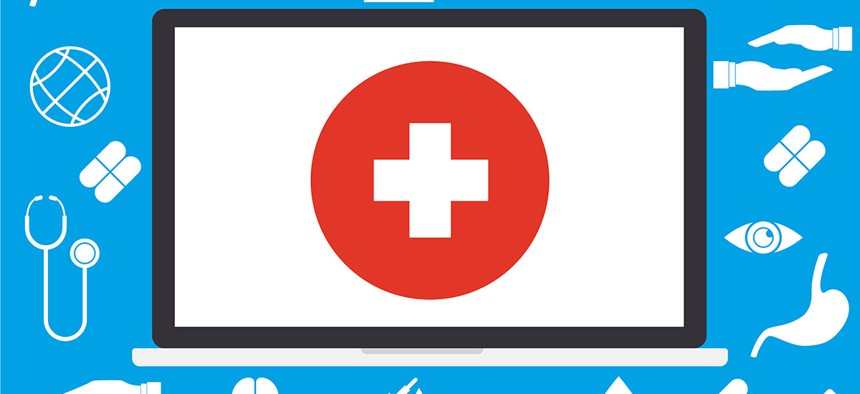Lawmakers Worry Hospitals Are Abusing Telehealth for Financial Gain

Nicescene/Shutterstock.com
One medical center was found to be enrolling patients in a virtual health care regimen, potentially for financial incentives.
A video conferencing system that lets doctors examine patients across the country could help veterans in remote areas get treatment without traveling, but lawmakers are concerned that rewarding hospitals for enrolling patients could lead to abuse.
Virtual health care, often known as telehealth, scored support from President Donald Trump, who recently described plans to expand the Veterans Affairs program. Earlier this month, Veterans Affairs Secretary David Shulkin announced a new application called VA Video Connect, which would let health care providers video chat with patients on their smartphones.
» Get the best federal technology news and ideas delivered right to your inbox. Sign up here.
A Wednesday House Veterans Affairs subcommittee hearing surfaced concerns from lawmakers that medical providers might be over-enrolling patients in telehealth programs when in-person care might be more effective. Committee members probed Veterans Affairs health officials on the costs and benefits of virtual care.
Here are a few takeaways from that hearing:
- Telehealth is a broad term that includes real-time video conferencing appointments; patients routinely sending photos, video or sound files to a health care provider for diagnosis; and devices that can remotely monitor a patient’s vital signs.
- The VA Office of the Inspector General has concluded that VA home telehealth—in which a patient does not have to travel to another facility to access telehealth devices—reduces inpatient admissions, according to the Veterans Health Administration’s Executive Director of Telehealth Services Kevin Galpin.
- Since Trump’s announcement, the VA has submitted a proposal to the Office of Management and Budget about ways to remove barriers to telehealth services. The proposal will be made public once OMB reviews it.
- Home telehealth could save veterans the cost of travel to a facility and could reduce hospital costs for patients who might previously have needed an in-person appointment to learn that their health issues are manageable at home. Still, home telehealth, which might require that the patient has a working smartphone or computer, is “necessarily more difficult” than setting up technology in clinics, said Rep. Jack Bergman, R-Mich. For telehealth to work, providers must sometimes rely on the unknown technological infrastructure of the patient, he said.
- The VA has been encouraging rural health care providers to think of telehealth as a way to deal with personnel shortages. For example, if a rural patient lives near a major metropolitan city but that group isn’t able to hire a health care provider, a caretaker elsewhere can connect with the patient in the interim. “When you can hire a provider, we’ll pull out,” Galpin said.
- An effective system requires hospitals be rewarded for the quality of care they provide, not the quantity, lawmakers argued. Otherwise, there’s a “perverse incentive” for employees to care only about enrollment numbers in exchange for a financial bonus, Rep. Ann Kuster, D-N.H., said during the hearing. At Detroit’s John D. Dingell Medical Center, the inspector general found an official was requiring staff to work overtime to document the enrollment of telehealth patients, “regardless of whether these patients wanted to be enrolled or even contacted,” that report said.
- The VA already has a system running that can automatically identify patients who are at risk for certain health issues who might be good candidates for telehealth, Galpin said.





